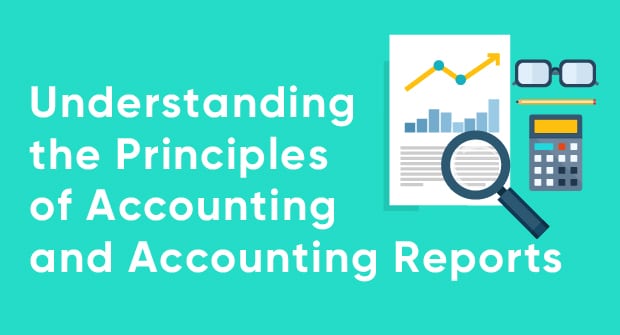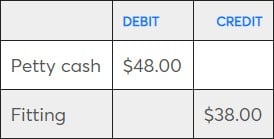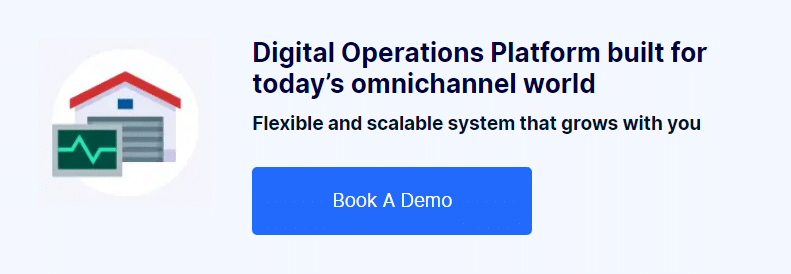Understanding Accounting and Accounting Reports

Introduction
Accounting reports are critical tools for properly operating your day-to-day retail business; for decision-making and planning in the short and long term. Understanding the principles of accounting and and how to use wisely use accounting reports, you’ll be empowered with valuable insights into how your business is performing and if you’re meeting your company’s objectives. This white paper takes a look at the basic principles of accounting reports, showing you how to best use and interpret your Profit and Loss, Balance Sheet and Trial Balance.
Basic Principles of Accounting
Your accounting data is made up of lots of individual transactions. In a “double entry” accounting system, whenever you add money or remove money, you need to assign an explanation of why this transaction took place.
For example, when you make a cash sale for fitting services provided in your store, you receive $48 into your petty cash for this service. These two lines are recorded in an accounting system as follows:
In any one transaction, the total debits must equal the total credits.
All lines in the accounting system have an account code, also known as nominal codes. In the above example, you’d have a code for “Petty Cash” and a code for “Fitting”.
These account codes are separated into five different account types, which lets you build accounting reports:
- Assets: What you own, and what you are owed
- Liability: What you owe (loans, supplier credit)
- Capital: Your company equity
- Revenue: Records sales made
- Expense: Records purchases made
Some systems split these down further into “Current assets” and “Long term assets”, and the same for liabilities. Expenses are broken down into “Purchases relating to sales” and “Overheads”.
Assets, Liabilities and Capital are Balance Sheet accounts, which mean that they track what you owe and what you own. Revenue and Expenses are Profit and Loss accounts, since the difference between the two is the profit you make.
Balance sheet
When it comes to the principles of accounting for business, the Balance Sheet plays a major role, showing you everything you need to consider as an asset to the business. The main areas are Asset, Liability and Capital accounts:
Assets:
- Cash in the bank
- Inventory
- Unpaid customer invoices
- Equipment and property
Liabilities:
- An overdrawn bank account
- Unpaid supplier invoices
- Sales Tax or VAT owed
- Outstanding loans
One of the principles of accounting is that Assets – Liabilities = Capital (Equity).
If you were to sell your entire inventory, receive cash for all unpaid customer invoices and pay off all debts, the value remaining would be the cash value of the business.
As long as your Assets are greater than your Liabilities, you are okay. If your Liabilities are greater than your Assets, if you owe more than you are owed, this is cause for concern.
Current Assets and Current Liabilities
Current assets are those that you expect to liquidate (turn into cash) within a year. This includes funds in the bank, your inventory and customer debt, but not your plant, machinery or property. Current liabilities are those that you expect to pay within a year, which includes supplier debt and short-term loans, but not a long-term loan.
The balance between current assets and current liabilities is worth looking at separately from the overall balance sheet figure, since it gives you more of an indication of what’s going on at the month-tomonth level. A healthy business should have current assets at least twice the value of current liabilities. If you determine this is not the case, use your reports to learn why this is in order to avoid potential cash flow problems in the near future.
What affects the Balance Sheet?
The Balance Sheet serves as a snapshot of your retail company’s financial health. Referring back to double entry transaction with balancing debits and credits:
Pay supplier from bank account – $10.00
Increase inventory levels + $10.00
Note that buying inventory for cash does not affect the number at the bottom of the Balance Sheet, since all you’re doing is moving funds between asset accounts; you’re trading cash for products.
Next, you sell the item from inventory for $15.00:
Customer pays into bank account + $15.00
Decrease inventory levels – $10.00
Balance (in bank account) + $5.00 in Profit
Your Balance Sheet total must always match the net profit at the bottom of your Profit and Loss (P&L) report, which in this case will also be $5 dollars.
Profit and Loss
The P&L report (also called an Income Statement) only includes Revenue and Expense account types.
Sales – Expenses = Profit
Gross profit and Net profit
Most businesses break their expenses down into two further sub-sections.
- Direct expenses: costs incurred in the process of selling goods, such as buying inventory, shipping from suppliers and packaging materials.
- Overheads, or fixed costs: generally not associated with the volume of sales, such as rent, wages, interest on loans and so on.
The Gross profit is the profit you make before the overheads are removed. This figure gives you the profitability of your product range, including the costs of shipping and processing. It’s important to review this data in detail to confirm your systems are set up to give the right figures in the right sections.
The Net profit is the value on the very bottom of the Profit and Loss report, once you have subtracted all the other expenses in your business. To make the best use of this report, confirm your business is structured to receive accurate information, quickly and in regular intervals.
We recommend having your monthly P&L ready by the 10th of the following month at the latest. Aim to include as much detailed data as possible to make the report useful to the management and operations of your company.
Trial Balance
The Trial Balance is not necessarily used for management reporting and decision making, but may be included in a report pack from an accountant, so it’s worth a quick mention.
It contains a list of all your account codes with the current balance. This balance is the sum of all debits and all credits on the account. Since for every transaction, debits must equal credits, and the Trial Balance contains all account codes, the Trial Balance itself must have a total of zero. If not, then you’ll need to research why and how to reconcile the difference.
The Trial Balance is an encapsulation of your entire business in one report. You can use it to create a Profit and Loss or Balance Sheet, if you know which codes are assets, which are liabilities and so on.
Because it’s covers your whole business, it can be used to transfer your accounting data between software systems; when you’re changing from one accounting software to another, from accounting software to a retail management platform, or at the end of the year when you send your figures off to your accountant.
If you’re using a cloud-based accounting package, an accountant can log in and collect any information they need themselves as well as investigate any anomalies.
Knowing how to properly utilize accounting reports for the daily and monthly management of your retail company is as essential as knowing which products your customers will buy or how to market in just the right way to grow your sales.


